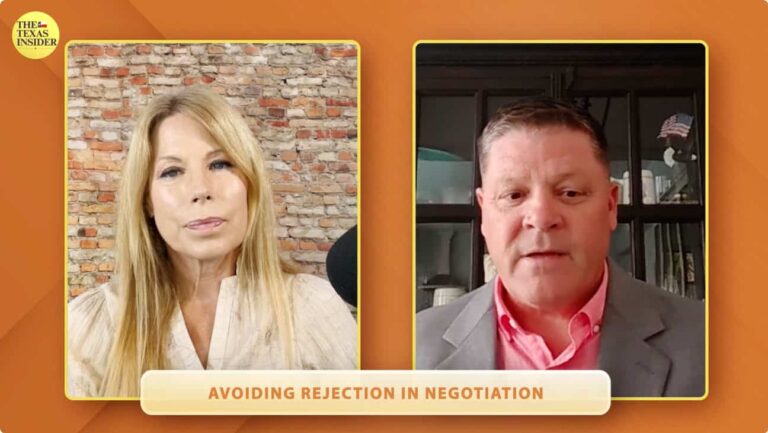Start the year with something that works.
Serious negotiators don’t rely on tactics, tips, and tricks.
What do serious negotiators rely on? Principles and behaviors.
Here are thoughts about how to apply the Camp System principles and behaviors to navigate and negotiate the New Year’s trends.
We reference the trends in a Forbes article by Bernard Marr, 8 Biggest Business Trends in 2022, and describe how negotiations will play out over the next year and beyond.
New trends bring new choices, and if you have many choices, then you’re going to make many decisions. The Camp System of Negotiation is a structured way to make better decisions.
In the Camp System, when considering a change, it is important to identify what you are trying to accomplish and why a new approach may be useful.
Next, list all of the problems that you need to resolve in order to implement your new approach. These problems are the barriers that stand between you and a successful agreement with your respected opponents. All the problems must be negotiated before you can create agreements that will make your new approach a reality.
It’s essential to think about this ahead of time in any negotiation because that’s how you’re going to plan and prioritize how to pursue your negotiation.
An Evolving Workforce
A trend that will continue past 2022 is the increase in remote employees and gig workers. This trend is a big one, so you have to be very clear in your communications and expectations. Since you don’t have the luxury of physical presence and having people observe what you do, you must demonstrate in some other way what you’re thinking and what you’re asking someone to do.
Choosing your words more carefully is important and this is exactly what one does when negotiating. The key in negotiation is that communication happens on the listener’s terms, not the speaker’s terms.
You must have a clear sense of your Negotiation Purpose.
Negotiation Purpose (aka, Mission and Purpose) is knowing what are you providing your respected opponent, and how will you deliver it, under conditions that make sense to you.
Your opponents and even members of your own team must see the benefit of working with you. One challenge of remote work is losing physical proximity that supports a greater sense of empathy between you and your team. This loss of empathy due to proximity can be regained. How? A required place to start is to write a strong Negotiation Purpose statement that aligns with your team’s needs.
Speaking with someone on the phone or video conference doesn’t count unless they understand what you say. That is why creating and using a Negotiation Purpose combined with more conscious verbal and written communication becomes more critical.
The Corporate Stepstool
Yet another New Year’s trend is a flatter organizational structure. This trend fits with the previous trend about remote work. If your organization is flat, you don’t have as much time. The hierarchy to communicate through is no longer there. You must speak clearly to everyone you interact with – in terms of the listener and where they are now in their level of understanding or experience.
It is important to be sensitive to this because you don’t have the excuse of speaking through a hierarchy or having someone else interpret what you mean.
There are also fewer people making more decisions. The entire decision-making protocol of your business becomes much more important. Who has the authority to make what decision? Are they by consensus? Are they by positional power, or are they by just you? With a flat organization, you need a decision-making protocol. Everyone should understand who has the authority to make decisions, what kinds of decisions they can make, and how they are made.
Turning to the Camp System, you can’t make an agreement that sticks unless you have a complete understanding of:
• the problems you are solving or opportunities you are presenting
• the decision process used by your respected opponent
• your and your respected opponent’s negotiation budget expressed in time, energy, money, and emotion that all parties are willing to invest in the negotiation topic and its implementation.
Authenticity
This is a tough one because there are at least two conflicting models that are considered authentic. The first one is the belief that real knowledge is based on objective research and experimentation. The second one is the belief that personal experiences, gut feel, and subjective information is the basis of knowledge. This second belief can lead to thoughts, aka authentic beliefs that are believed to be true, regardless of objective, fact-based support.
The authentic beliefs based on objective facts conflict with the authentic beliefs based on misinformation and lack of objective proof.
The challenge in negotiation is how to engage with people who are passionate about their authentic beliefs that they hold to be true, yet you disagree with based on your authentic beliefs. You can address this tough situation with a full understanding and application of the Camp System’s Negotiation Purpose.
To review, Negotiation Purpose is: What are you providing your respected opponent, and how will you deliver it under requirements that make sense to you?
You must decide if you can and want to satisfy your respected opponent with what they want and how they want it, under conditions that make sense to you. This can be stressful and the key to reducing the stress of negotiating with people who have different authentic beliefs is to remember that all parties have the right to veto.
You don’t have to profess your beliefs to others; you only have to decide if you can and want to deliver what they want, as identified in the negotiation purpose. Likewise, suppose your conditions of satisfaction are not feasible due to the authentic beliefs of your respected opponent? In that case, you must respect their right to veto and potentially make a respectful exit from the negotiation.
When you have a negotiation system to navigate through challenges, you will have less stress. This frees up your time and energy budget and you can have more thoughtful, meaningful conversations with people.
If you are ready to be coached with the principles and behaviors that can help you navigate the challenges of 2022 and beyond, visit our website and complete the form on the bottom of this page.
Sources:
Marr, Bernard, “The 8 Biggest Business Trends in 2022,” Forbes, Nov. 1, 2021, accessed Jan. 5, 2022, https://www.forbes.com/sites/bernardmarr/2021/11/01/the-8-biggest-business-trends-in-2022/?sh=54db5cbf21da.





